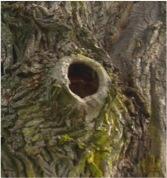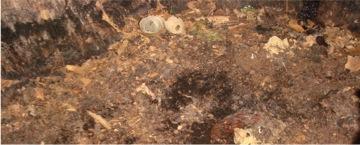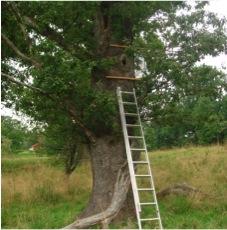Introduction
Today, old deciduous trees are rare due to timber harvesting. Many species are dependent on these trees and therefore threatened. When trees get older, structures serving as microhabitats for many organisms start to develop. One of these microhabitats is trunk hollows that start to develop, with help from fungi, when the trees are about 200 years (Fig.1). The trunk hollows often contain wood mould, which is loose wood mixed with dead leaves, remains of bird nests, insects and fungi (Fig.2). A special kind of beetles live in the wood mould and are dependent on dead wood for their survival. Many saproxylic (wood-living) beetles have been shown to live in old hollow oaks. However, there seem to be no systematic sampling comparing the saproxylic fauna in hollows between tree species.


Aim
- The aim of this study was to investigate if different saproxylic beetles prefer hollow trees of different species.
- To what extents are saproxylic beetles tree genus specialists?

What can this study be used for?
A better knowledge about the habitat requirements of rare saproxylic beetles can be useful in landscape planning and conservation of this fauna. Old oaks have been in focus in many studies but other broad-leaved tree species might also be important to consider as supporting habitats (Fig.3). Therefore it is important to know which saproxylic beetles that utilize other broad-leaved tree genera and how specialized they are. This can be used to get better models in conservation and management planning.
Responsible for this page:
Director of undergraduate studies Biology
Last updated:
05/22/11
